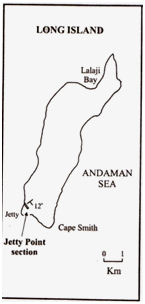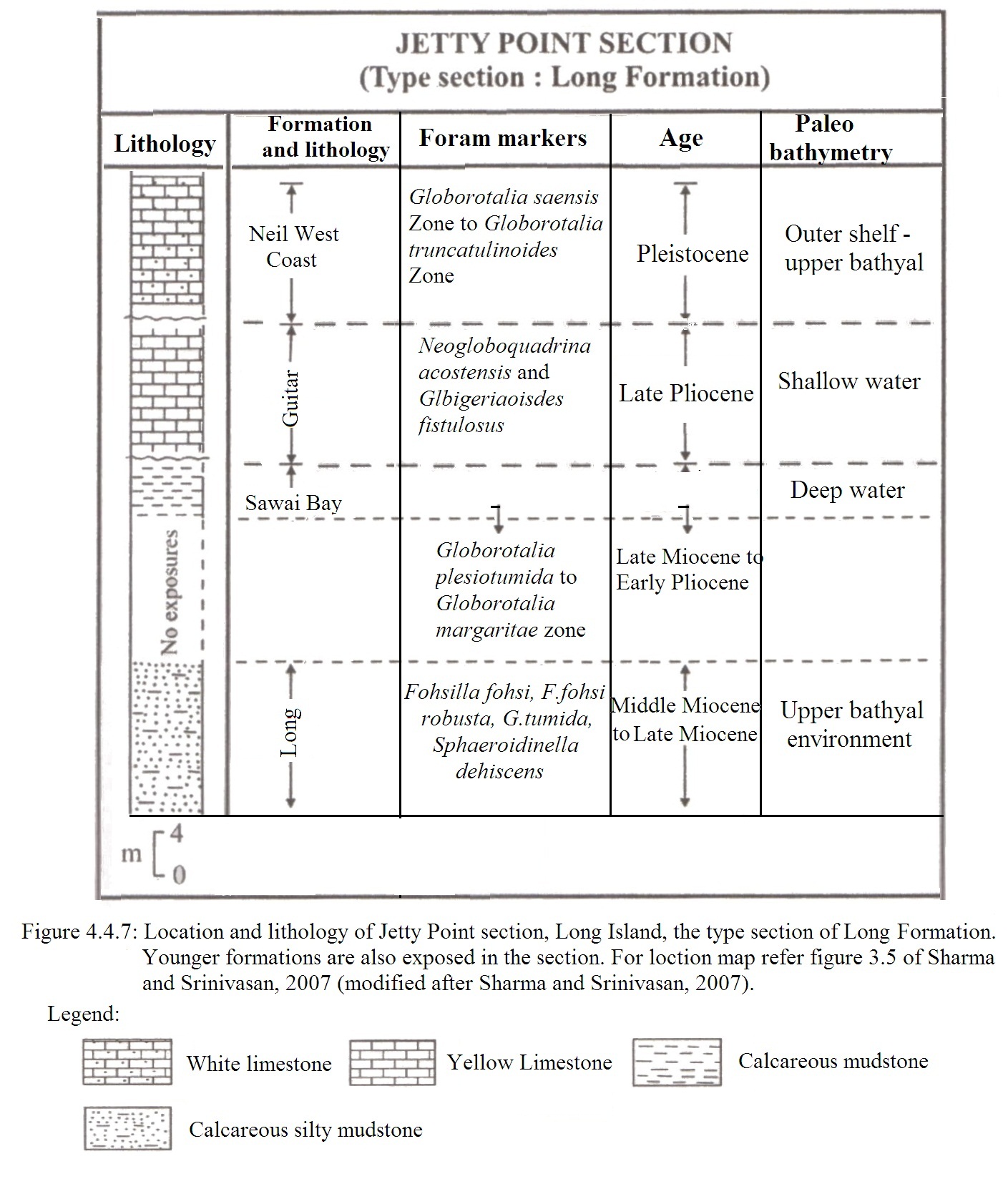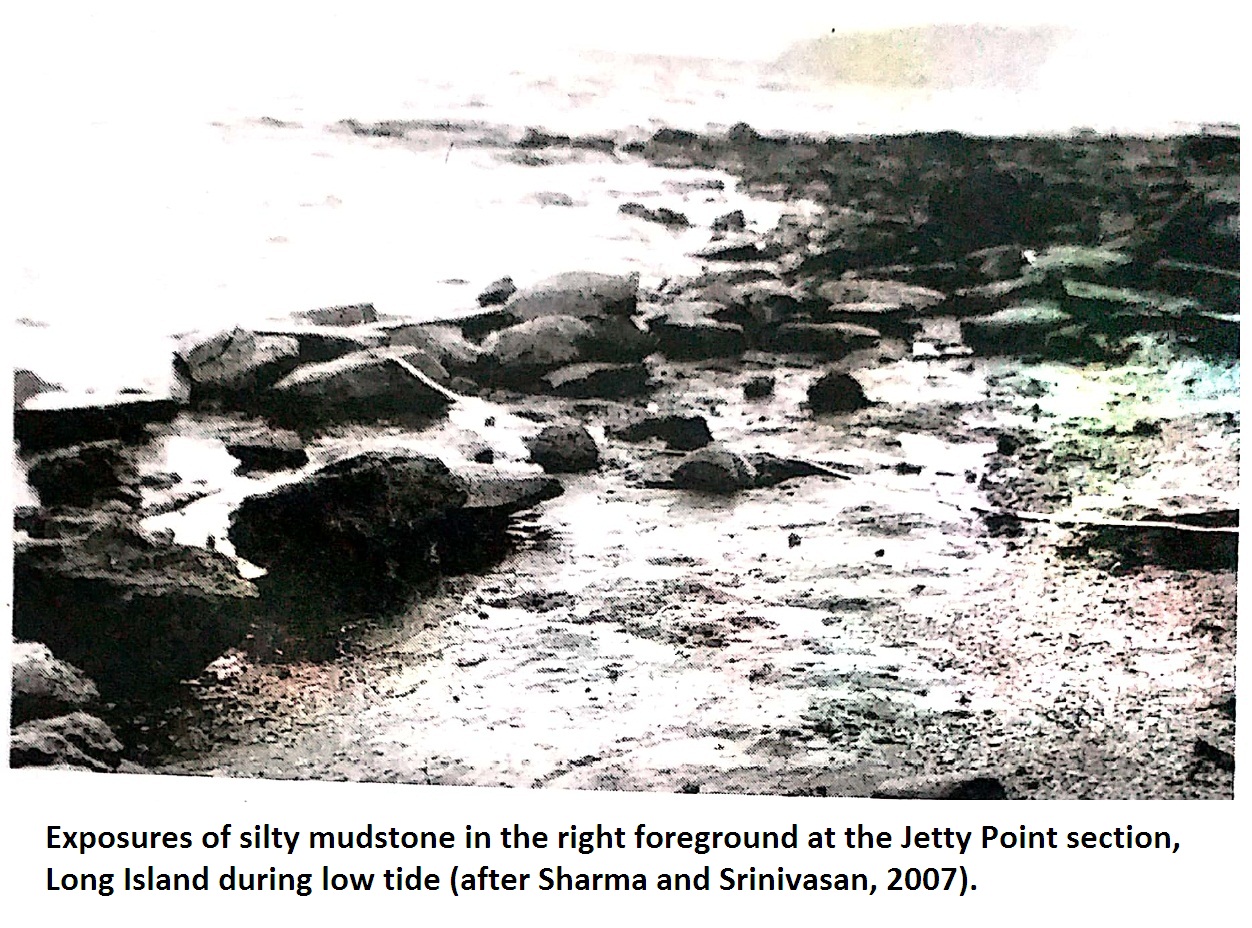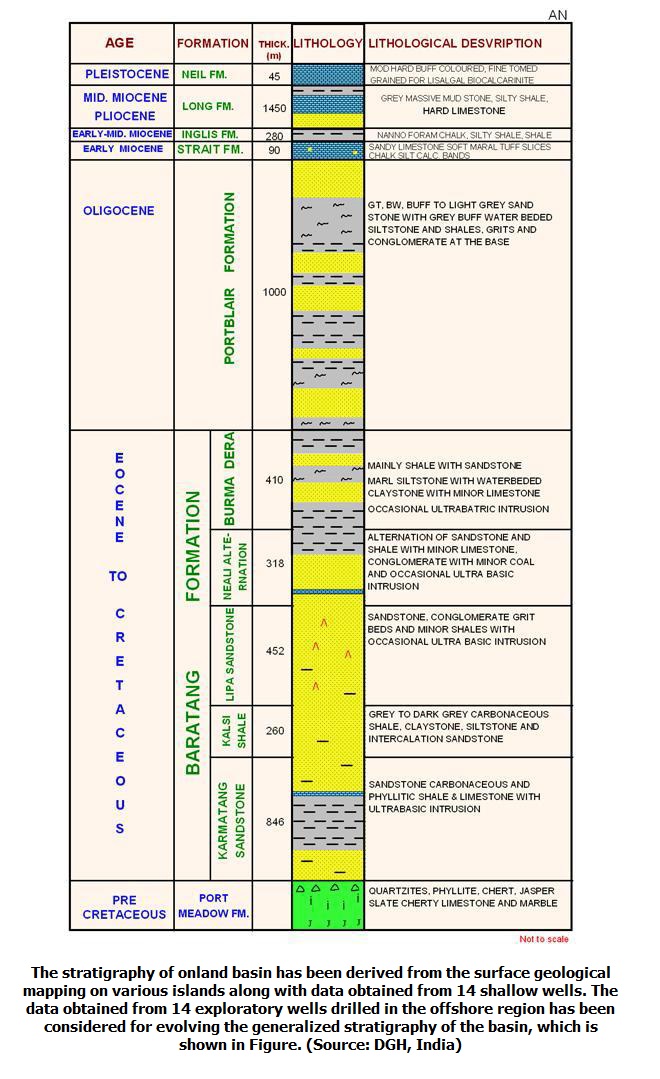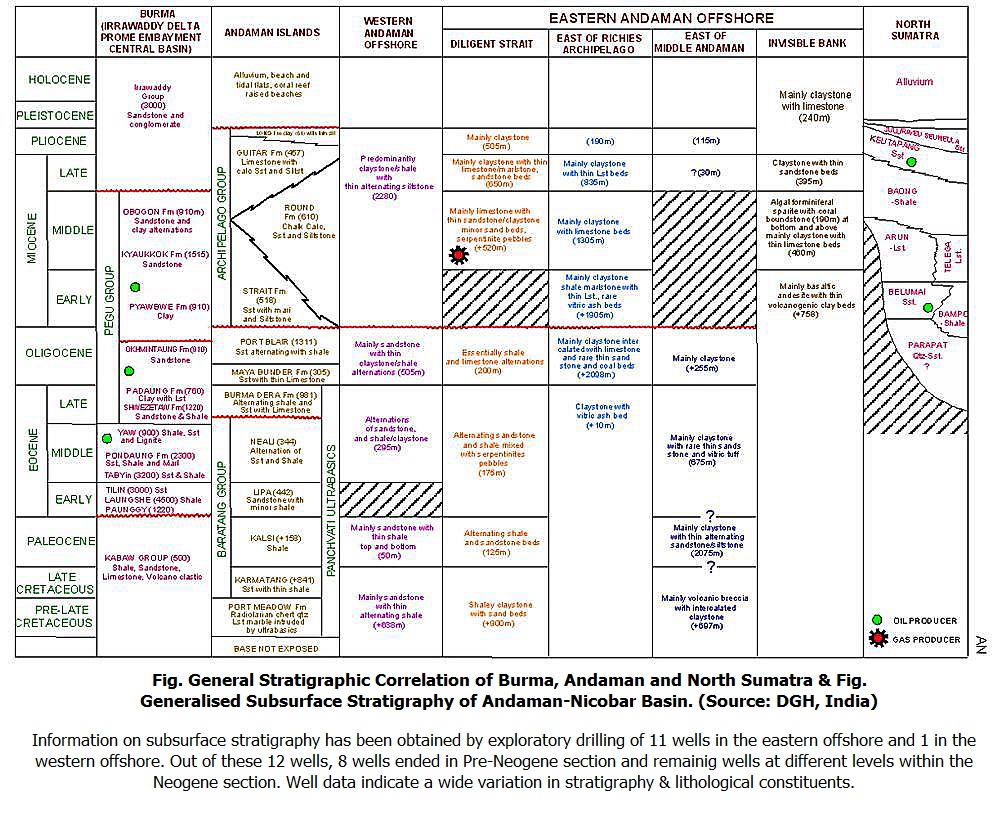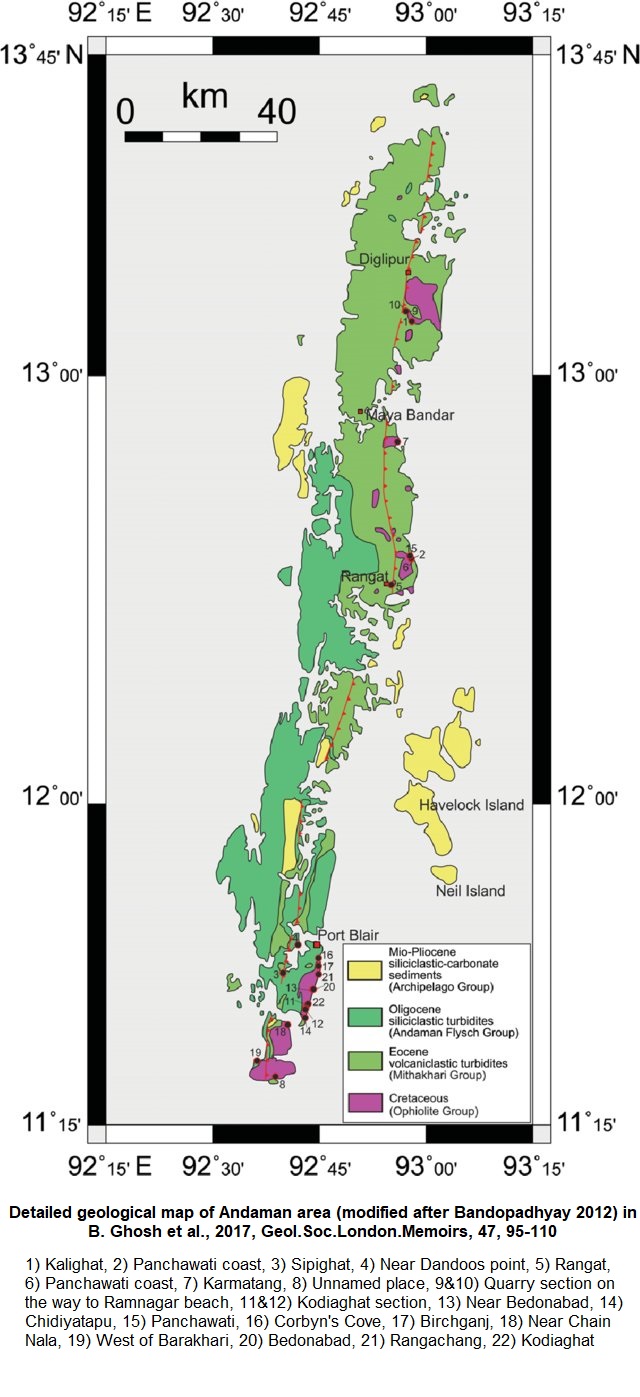Long Fm
Type Locality and Naming
Named after Long Island. The nomenclature Long Formation was introduced by Srinivasan and Azmi (1976b). Earlier, Chandra and Guha (1963) used the term ‘Long Clay Formation’ informally without specifying type locality. Here, the authors designate Jetty Point section of Long Island as the type section where a ca. 14 m thick sequence of soft, greenish grey, calcareous, silty mudstone belonging to this formation is exposed at sea level along the coast near the jetty and is visible mainly during low tide.
[Original Publication: Srinivasan, M.S. and Azmi, R.J. (1976b). New developments in the Late Cenozoic Lithostratigraphy of Andaman-Nicobar Islands, Bay of Bengal. Proc VI Indian Colloq. Micopal and Strat., pp. 302-327.]
At the section, the Long Formation is overlain by soft, grey, calcareous mudstone, which Srinivasan and Srivastava (1975) referred to as Sawai Bay Fm. The exact nature of contact between the two formations is not clear.
At Melville Point section, Havelock Island, the calcareous siltstone and silty mudstone, belonging to Long Formation contain many hard, calcareous bands in the lower part, which are replaced by thickly bedded hard limestone towards the younger part of the sequence (Srinivasan and Azmi, 1976b). Karunakaran et al., (1968) referred this limestone as Melville limestone.
At Nancowry and Kaqmorta islands, the Middle Miocene sequences comprising silty mudstone represent facies variant of the upper part of Inglis Fm and lower part of Long Fm. In the southeastern part of Little Andaman, the Middle Miocene strata represented by dark bluish grey, highly calcareous mudstone, which Srinivasan (1975) named Hut Bay Fm, can be correlated with the lower part of Long Formation (Sharma and Srinivasan, 2007).
Another reference section is Well AN-1-1.
[Figure 1: Location of Jetty Point section on Long Island (after Sharma and Srinivasan, 2007.]
Lithology and Thickness
Calcareous silty claystone. The type section of this formation comprises of soft, greenish grey, calcareous, silty mudstone. The Long Formation contains many hard, calcareous bands in the lower part, which are replaced by thickly bedded hard limestone towards the younger part of the formation.
[Figure 1: Lithostrat of the Long Fm at Jetty Point section, Long Island. Younger formations (Sawai Bay Fm – Guitar Fm – Neill West Coast Fm) are also exposed in the section (after Sharma and Srinivasan, 2007)]
[Figure 2: Silty mudstone of the Long Fm exposed at Jetty Point section, Long Island, during low tide (after Sharma and Srinivasan, 2007)]
[Figure 3: Generalized Subsurface Stratigraphy of Andaman-Nicobar Basin (from dghindia.gov.in)]
Relationships and Distribution
Lower contact
The lower boundary of the Long Formation with the Inglis Fm is marked by a small hiatus in Havelock Island.
Upper contact
At the type section, the Long Formation is overlain by soft, grey, calcareous mudstone, which Srinivasan and Srivastava (1975) referred to as Sawai Bay Fm. The exact nature of contact between the two formations is not clear.
At Guitar Island, the Long Formation unconformably overlain by limestone belonging to Guitar Fm (Azmi and Srinivasan, 1974).
Regional extent
Rocks belonging to the Long Formation, besides in the type area, are exposed at Melville Point, Meetha Nala and P.W.D. Nala sections of Havelock Island and at Guitar Island.
[Figure 4: General Stratigraphic Correlation of Burma, Andaman and North Sumatra (from dghindia.gov.in)]
[Figure 5: Detailed geological map of Andaman area (modified after Bandopadhyay 2012) showing locations mentioned in numbers in B. Ghosh et al., 2017, Geo.Soc.London.Memoirs, 47, 95-110)]
GeoJSON
Fossils
Srinivasan and Azmi (1976b) recorded foraminifera corresponds to Praeorbulina glomerosa Zone to Globorotalia plesiotumida Zone.
Age
Depositional setting
Upper bathyal
Additional Information
